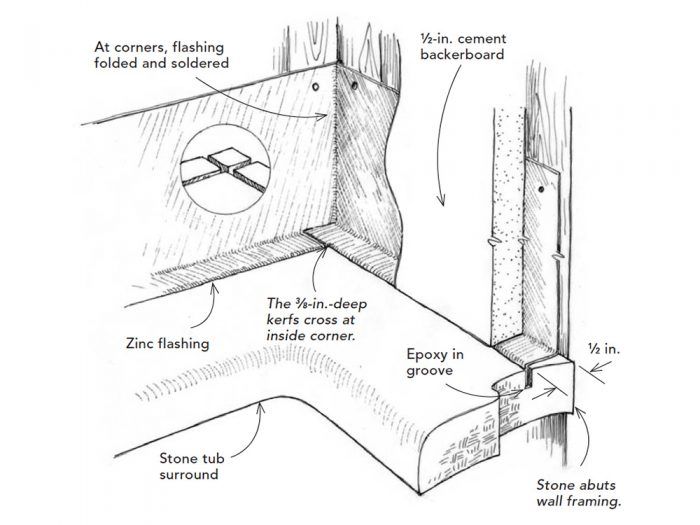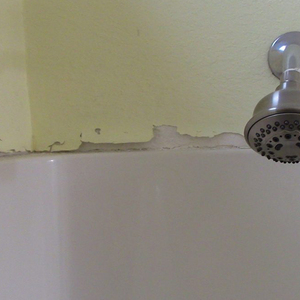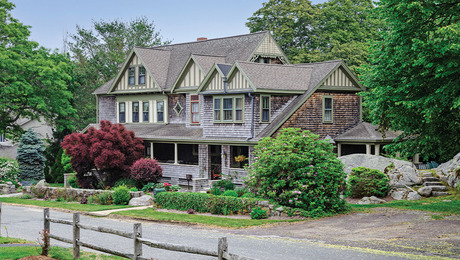Flashing an Undermount Tub/Shower Combo
Learn how to install a tub with no flange mounted under a stone-slab tub surround.

A typical 3-ft. by 5-ft. tub with a shower has an integral flange that bends up the wall. The flange is covered with backerboard followed by tile, and the flange protects the wall framing from any water that might get by the caulk at the intersection between the tub and the tile. But what do you do when your client wants the tub to be mounted under a stone-slab tub surround? It has no flange. The only “solutions” I’ve heard about range from caulk to a stick-on flange that adheres to the stone deck with two-sided tape. If a pinhole develops in your caulk or your sticky tape, you will have a problem with water infiltration. My client wanted that stone surround, and I didn’t want to worry about leaks.
Here’s How We Did It
As shown in the drawing, I had my stone fabricator cut 3⁄8-in.-deep grooves into the top of the slab on three sides, 1⁄2 in. from the edge. I installed the stone top tight to the framing before applying the tile backerboard. Then, using a sheet-metal brake, I bent a 1⁄4-in. and a 1⁄2-in. step in a 6-in. wide strip of zinc flashing. I chose zinc to avoid any chance of rust stains. I snipped the flashing at the inside corners and soldered the seams, creating a one-piece flange for the entire tub surround. After dry-fitting, we filled the grooves with two-part epoxy and dropped the flashing into them.
The finished tile walls are caulked at the stone-to-tile intersection, but I don’t have to worry about the caulk failing and letting water into the wall. I call that belt-and-suspenders peace of mind.
— Chick Raspler, Briarcliff Manor, NY
From Fine Homebuilding #234
RELATED STORIES






























View Comments
And if you use epoxy you can clean up with white vinegar. Cheap, ton toxic and works great.
I can't believe you went to all that trouble and didn't use a copper flashing.